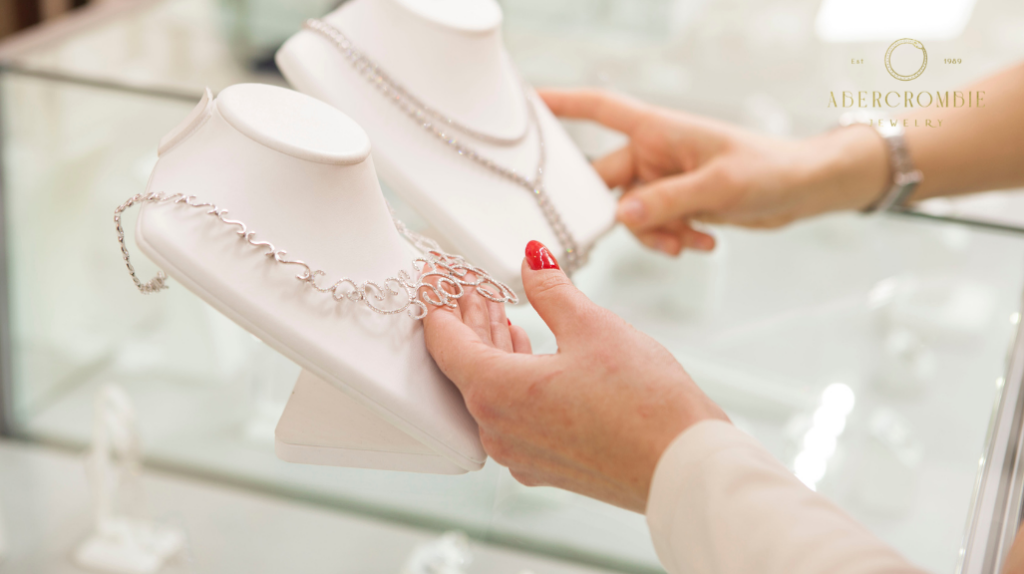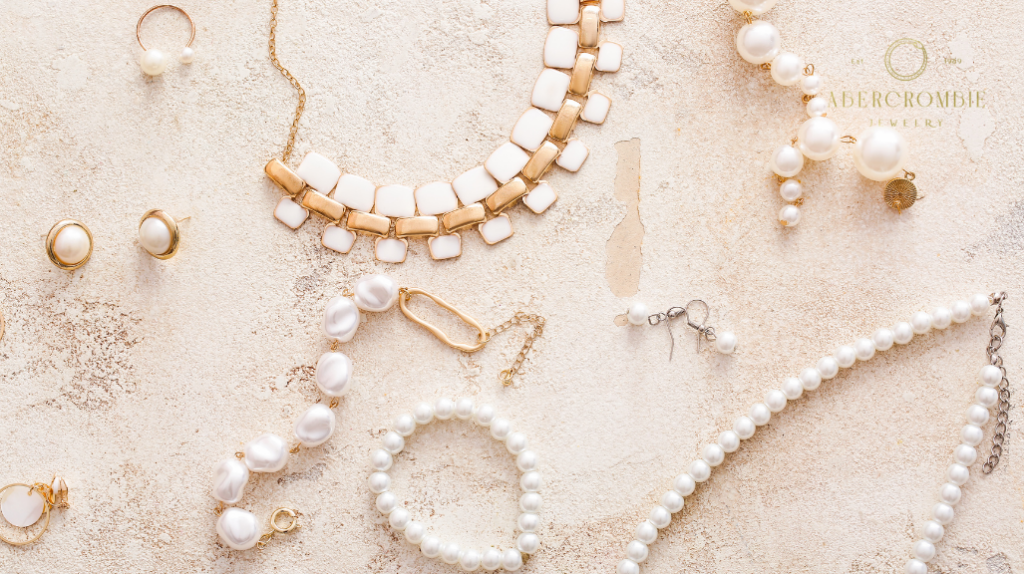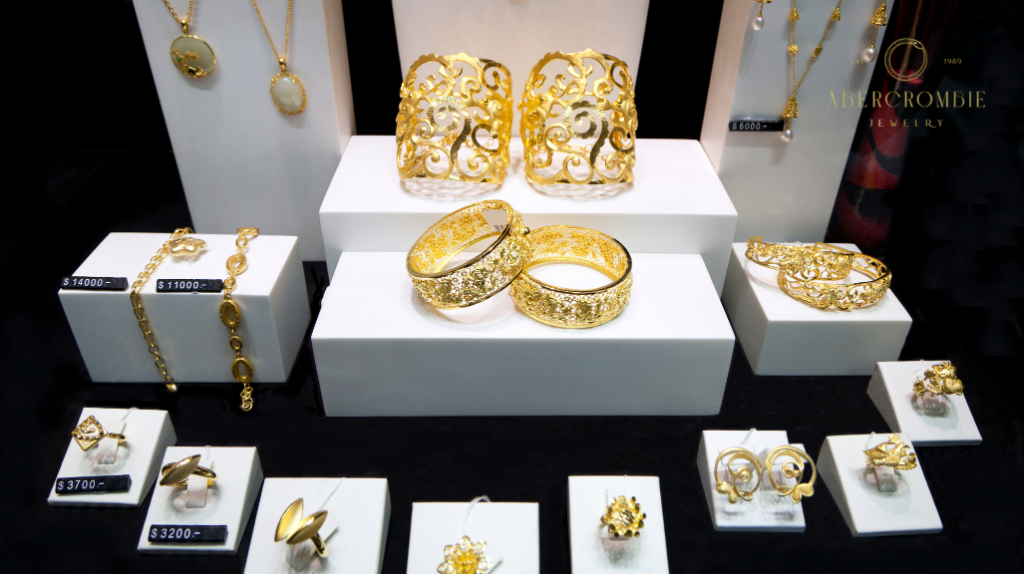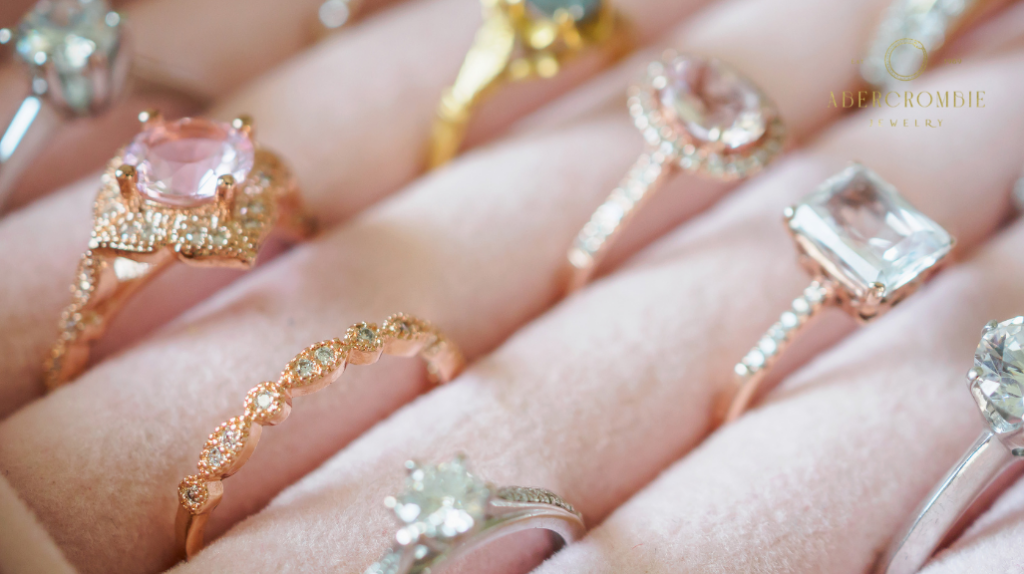Jewelry collections are often viewed as personal treasure troves, overshadowed by the allure of high fashion and luxury brands. Yet, they carve their niche with an undeniable charm and versatility. This unique character sets jewelry collections apart in the vast world of fashion and accessories, offering a distinct experience that distinguishes them as a category in their own right.
Critical elements of a jewelry collection include classic pieces like pearls and diamonds, modern minimalist designs, eclectic vintage finds, and statement pieces that showcase individual styles. Each type of jewelry presents its aesthetic, craftsmanship, historical significance, and recommendations for pairing with outfits. The following sections will detail these aspects, providing a richer understanding of what makes a jewelry collection, not just an assortment of accessories but a reflection of personal style and history.
What is a jewelry collection?
A jewelry collection is a personal curation of pieces that encapsulate an individual’s style, memories, and milestones. It’s a diverse assembly that might include earrings, necklaces, rings, and bracelets, each selected for its unique beauty, sentimental value, or the sheer pleasure it brings the wearer. Collections can range broadly in composition, showcasing everything from timeless classics, such as pearls and diamonds, to bold modern designs and an eclectic blend of vintage and contemporary pieces.
Building a jewelry collection is a deeply personal journey. Typically, it begins with foundational items and gradually expands to incorporate more distinctive or statement pieces. It’s about more than just acquiring jewelry; it’s about creating a collection that resonates with your aesthetic, tells your story, and complements your wardrobe in a way that is distinctly yours.
Identifying your style

Identifying your style is the cornerstone of curating a jewelry collection that mirrors your identity and aesthetic preferences. It’s about pinpointing your style and how you express yourself through your accessories. There are three main style categories: Classic, Modern, and Eclectic.
- Classic style is defined by timeless pieces such as pearls and diamonds, exuding elegance and sophistication.
- The modern style embraces minimalist designs and geometric shapes, catering to those with a contemporary fashion sense.
- Eclectic style is ideal for individuals who delight in a mix of vintage and contemporary, displaying a bold, diverse combination of different eras and designs.
Understanding where you fit within these styles—or perhaps a blend—helps you make informed decisions to assemble a collection that enhances your wardrobe and narrates your unique story.
Classic: Timeless pieces, pearls, and diamonds
The Classic style is synonymous with timeless elegance, where pearls and diamonds epitomize sophistication. These pieces are the cornerstone of any jewelry collection, offering versatility and enduring appeal. Whether it’s a simple pearl necklace or a diamond solitaire ring, classic jewelry pieces are investments that never fade from fashion.
Examples:
- A strand of Akoya pearls for a touch of grace.
- Diamond stud earrings for everyday luxury.
- A gold locket necklace as a keepsake.
Modern: Minimalist designs, geometric shapes
Modern jewelry is defined by its embrace of minimalist designs and geometric shapes, catering to those with an appreciation for contemporary aesthetics. This style is marked by its clean lines and often incorporates cutting-edge materials, making it ideal for a sleek, forward-thinking wardrobe. Modern pieces are perfect for adding a touch of understated elegance to everyday looks.
Examples:
- A geometric pendant necklace in sterling silver.
- Minimalist cuff bracelets with clean lines.
- Stackable rings with a mix of metals for a modern twist.
Eclectic: Mix of vintage and contemporary
Eclectic jewelry celebrates diversity, blending vintage finds with contemporary designs to create a unique collection. This approach encourages personal expression and creativity, allowing for a playful mix of textures, colors, and historical influences. Eclectic collections are distinctive, showcasing a broad spectrum of styles that reflect the wearer’s individual taste and adventurous spirit.
Examples:
- A vintage Art Deco brooch paired with a modern leather choker.
- Bohemian layered necklaces with mixed metals and gemstones.
- Statement earrings that combine traditional motifs with contemporary materials.
Setting a budget

Setting a budget is a critical step in building a jewelry collection. It ensures that your passion for adornment aligns with your financial reality. It’s about establishing an overall spending limit that fits comfortably within your budget, allowing you to enjoy curating your collection without fiscal strain. A key part of this process involves allocating funds between statement pieces that may require a higher investment due to their timeless value and basic items that serve as the foundation of your collection.
This balanced approach fosters a diverse and versatile collection and safeguards your financial well-being, ensuring your collection can grow and evolve without compromising your budget.
Determine the overall spending limit.
Establishing an overall spending limit is foundational in budgeting for your jewelry collection. This involves carefully evaluating your finances to set a cap on how much you’re willing to spend on jewelry. This limit is crucial for maintaining financial health and ensuring that your collection grows in an enjoyable and stress-free way.
Setting this boundary from the start allows you to make informed choices that align with your financial goals and lifestyle.
Allocate budget for statement vs. basic pieces.
After setting your overall budget, the next important step is strategically allocating funds between statement pieces and basic items. Statement pieces, known for their unique appeal and potential as heirlooms, often command a higher investment. On the other hand, basic pieces are the staples of your collection, offering versatility and daily wearability at a more accessible price point.
By thoughtfully dividing your budget between these categories, you build a well-rounded collection that includes standout items for special occasions and essential pieces for everyday elegance. To aid in this process, consider the following table, which outlines potential budget allocations and average price ranges for different types of jewelry. This exhaustive detail provides a comprehensive guide to help you balance your budget effectively:
| Jewelry Type | Average Price Range | Budget Allocation (%) | Notes |
| Earrings (Studs) | $50 – $200 | 10% | Essential for daily wear. Prices vary by material. |
| Necklaces (Chain) | $100 – $500 | 15% | Versatile for layering or as standalone pieces. |
| Rings (Bands) | $100 – $1,000 | 20% | Daily wear to statement pieces. Consider durability and design. |
| Bracelets (Cuffs) | $75 – $300 | 10% | Adds elegance to any outfit. Prices depend on design complexity. |
| Statement Pieces | $500 – $5,000+ | 45% | Investment pieces like diamond rings or designer watches. Higher budget for heirloom quality. |
Starting with the basics
Initiating your jewelry collection with basic pieces is a thoughtful strategy that establishes a versatile and enduring foundation. These essentials, such as earrings, necklaces, rings, and bracelets, are the cornerstone of any well-rounded collection. Beginning with simple yet versatile items like studs, hoops, simple chains, and pendants allows endless styling possibilities across various occasions.
These pieces are adaptable and timeless, ensuring that your collection retains its appeal and relevance over the years. By focusing on these basics initially, you pave the way for a collection that can be seamlessly enhanced and personalized with more distinctive or statement pieces as your style evolves. When selecting your basic pieces, consider the following:
- Lifestyle and Activity Level: For active lifestyles, choose durable materials like stainless steel or titanium. A simple gold band or silicone-backed earrings can withstand daily wear and physical activity.
- Wardrobe Needs: Assess your wardrobe to determine which metals and colors complement your clothing. A silver chain necklace or gold hoop earrings can match various outfits, making them versatile choices.
- Skin Tone: Select metals and gemstones that enhance your natural skin tone. Gold and rose gold pieces add a radiant touch for warm skin tones, while silver and white gold beautifully complement cool skin tones. Neutral-toned individuals can experiment with both to find their preferences.
Earrings: Studs, hoops, and drop styles
Earrings are a pivotal component of a foundational jewelry collection, offering styles from the understated to the statement-making. Studs are the quintessence of simplicity, perfect for daily wear or complementing a more elaborate necklace. Hoops, varying in size and design, inject a playful or elegant dynamism into your look.
For sensitive ears, look for hypoallergenic materials like surgical steel or platinum. Drop earrings provide graceful movement and sophisticated flair for a touch of elegance or to elevate an evening ensemble. Choose designs that reflect your style while maintaining versatility for various occasions.
Necklaces: Chains, pendants, and chokers
Necklaces bring diversity and character to your jewelry arsenal. Whether dainty or bold, chains lay the groundwork for layering or stand-alone simplicity. Opt for adjustable lengths to maximize versatility.
Pendants add a personal touch or a dash of color, often becoming a conversation starter. Consider a locket or a charm that holds personal significance as a staple pendant piece. Chokers straddle the line between contemporary chic and nostalgic charm, making them versatile pieces for various styles and occasions.
A velvet or lace choker can add a soft, feminine touch, while a metal choker offers a sleek, modern edge.
Rings: Bands, signet, and stackable rings
Rings, from the minimalist to the ornate, are a testament to personal taste and style. Bands offer sleek simplicity, detailed artistry, and subtle accents or significant statements. A simple gold or silver band is a versatile choice that can complement any outfit.
Signet rings, often personalized with engraved initials or symbols, bring a touch of heritage and tradition. They serve as a distinctive piece that adds character to your basic collection. Stackable rings invite creativity, allowing for an ever-changing combination of textures and designs that reflect your mood or outfit.
Start with a few basic bands in different textures or colors that can be mixed and matched.
Bracelets: Cuffs, bangles, and charm bracelets
Bracelets add a playful or polished element to your collection. Cuffs range from minimalist bands to ornate pieces that capture the eye and are adaptable to casual or formal settings. A simple metal cuff can serve as a statement piece on its own or be layered with other bracelets for a more eclectic look.
Bangles, worn singly or in a jingling cascade, offer versatility in styling. Choose bangles that can easily slip on and complement other wristwear. Charm bracelets are deeply personal, enabling you to curate a collection of charms that symbolize cherished memories, milestones, or interests.
Starting with a basic chain, you can gradually add charms that reflect your evolving interests and experiences. By considering these factors when selecting your basic jewelry pieces, you can ensure that your foundational collection complements your lifestyle and wardrobe and enhances your natural beauty, setting the stage for a truly personalized and evolving jewelry collection.
Understanding jewelry quality

Grasping the essence of jewelry quality is pivotal in curating a collection that is not only aesthetically pleasing but enduring. This comprehension hinges on the characteristics of metals and gemstones that dictate their appeal and longevity. For metals, the focus is on gold purity, measured in karats, alongside the integrity of other materials like silver and platinum.
Hardness, color, and clarity are the main quality markers for gemstones. High-quality gemstones not only dazzle more brilliantly but are also more resilient over time. Prioritizing quality ensures that each piece in your collection enhances its beauty and maintains its value, making every acquisition a lasting investment.
Metals: Gold purity, silver, and platinum
In the realm of metals used in jewelry, key elements include gold purity, silver, and platinum. Gold purity is crucial and is measured in karats, where 24 karat represents pure gold. The purity level affects the metal’s value and hue and its malleability.
Silver, often found as sterling silver (92.5% purity), is cherished for its bright luster and adaptability in various designs. Platinum stands out for its exceptional durability and purity, making it a preferred choice for pieces meant for daily wear, as it retains its color and shine over years of use. To further understand the differences in metal types, consider the following detailed table:
| Metal Type | Characteristics | Durability | Care Instructions |
| Gold | Valued for its luster and elasticity. Available in various karats, indicating purity. | Varies by karat; higher karat means softer metal. | Regular cleaning with a soft cloth; avoid harsh chemicals. |
| Silver | Known for its bright finish and affordability. Sterling silver is most common in jewelry. | Prone to tarnishing but can be polished easily. | Store in anti-tarnish bags; clean with silver polish. |
| Platinum | Highly durable and resistant to damage. It has a natural white sheen that does not tarnish. | Very durable, making it ideal for daily wear. | Clean with mild soap and water; polish with a soft cloth. |
Gemstones: Hardness, color, and clarity
Gemstones are evaluated based on their hardness, color, and clarity, which determine the stone’s quality and appeal. A gemstone’s hardness, measured on the Mohs scale, indicates its resistance to scratches and general wear. A gemstone’s color is analyzed in terms of hue, saturation, and tone, with specific colors being more valued in certain stones.
Clarity involves the presence or absence of inclusions and blemishes, either within the stone or on its surface, with clearer stones generally being of higher quality. These criteria are essential for choosing gemstones that are not only visually captivating but also durable. For a comprehensive understanding of how to assess gemstone quality, refer to the following table:
| Gemstone Attribute | Description | Evaluation Tips |
| Hardness | Resistance to scratching, measured on the Mohs scale. | Higher numbers indicate greater durability. Ideal for daily wear: Diamonds (10), Sapphires (9), Rubies (9). |
| Color | Evaluated based on hue, saturation, and tone. | Look for vibrant, well-saturated colors. The absence of color in diamonds indicates higher quality. |
| Clarity | The absence of inclusions and blemishes. | Use a jeweler’s loupe to inspect for visible flaws. Higher clarity grades are more valuable and rare. |
Understanding these detailed aspects of jewelry quality enables you to make informed decisions when selecting pieces for your collection, ensuring that each addition adds aesthetic value and stands the test of time.
Where to buy jewelry

Choosing where to buy jewelry is a crucial decision that influences your collection’s quality, variety, and uniqueness. Local jewelers are ideal for those who value personalized service and the opportunity to support community businesses, offering custom and unique pieces that stand out. Online stores provide a broad selection at your fingertips, complemented by customer reviews that aid in making informed decisions.
For enthusiasts of history and uniqueness, vintage shops present a wealth of antique and rare finds, each with its narrative. Whether you prioritize the convenience and range of online shopping, the craftsmanship and personal touch of local jewelers, or the distinctive allure of vintage pieces, each option presents its advantages to enhance your jewelry collection.
Local jewelers: Custom and unique pieces
Local jewelers stand out for their ability to provide a highly personalized shopping experience, ideal for those seeking custom and unique pieces. They offer the unique opportunity to collaborate directly with craftsmen, ensuring your jewelry is tailored to your preferences. Supporting local jewelers results in a piece that’s uniquely yours and contributes to the local economy, making each purchase feel even more special.
When visiting a local jeweler, consider asking the following questions to ensure quality and craftsmanship:
- Can you provide information on the sourcing of your materials?
- How do you ensure the quality and durability of your pieces?
- Can you customize designs to fit personal preferences?
- Do you offer repair or maintenance services for jewelry purchased from you?
Online stores: Wide selection, reviews
Online stores offer the advantage of a wide selection of jewelry accessible from anywhere at any time. Customer reviews add a layer of transparency, allowing you to assess the quality and customer satisfaction of pieces before committing to a purchase. This avenue provides the flexibility to compare various options, ensuring you find the perfect match for your style and budget.
When shopping online, consider the following tips to ensure a positive experience:
- Read customer reviews and ratings to gauge satisfaction and quality.
- Look for detailed product descriptions and high-quality images.
- Check the return policy and warranty information.
- Verify the security of the payment process.
Vintage shops: Antique and rare finds
Vintage shops are the gateways to owning a piece of history, perfect for those searching for antique and rare finds. Each vintage store item comes with its backstory, adding a depth of character and uniqueness that’s hard to find elsewhere. Shopping vintage is not just about acquiring jewelry; it’s about embracing pieces with a soul, a story, and a timeless appeal.
To ensure the authenticity and quality of vintage jewelry, consider the following tips:
- Ask for a history or provenance of the piece, if available.
- Inspect the jewelry for hallmarks, maker’s marks, or signatures.
- Inquire about any restoration work that has been done.
- Consider having the piece appraised by an independent expert.
Caring for your jewelry

Caring for your jewelry is key to preserving its sparkle and extending its life. Regular cleaning with a soft cloth and mild soap removes dirt and oils that can tarnish or dull your pieces. Equally important is proper storage; utilizing jewelry boxes or anti-tarnish bags helps protect your items from physical damage and keeps them in pristine condition.
By investing a little time and effort into maintaining your jewelry, you ensure that each piece remains a valuable and beloved part of your collection, maintaining its beauty and significance for future generations.
Regular cleaning: Soft cloth, mild soap
Regular cleaning is essential for maintaining the brilliance of your jewelry. Gently wiping your pieces with a soft cloth and cleansing them with mild soap can effectively remove accumulated dirt and oils. This enhances their appearance and prevents potential damage to metals and gemstones, ensuring that your jewelry remains luminous and captivating.
Cleaning Tips by Material:
- Gold and Platinum: Use a solution of warm water and detergent-free soap with a soft-bristled brush. Dry with a soft cloth.
- Silver: Polish with a special silver or soft, lint-free cloth. For tarnished silver, use a silver-specific cleaner following the manufacturer’s instructions.
- Gemstones: Clean most gemstones with a soft, damp cloth after wearing. Delicate stones like opals require minimal exposure to water; instead, use a soft, dry cloth.
- Pearls: Wipe with a soft, damp cloth. Avoid submerging them in water, as this can weaken the stringing.
Proper storage: Jewelry boxes, anti-tarnish bags
Proper storage is crucial for the longevity of your jewelry. Utilizing jewelry boxes or anti-tarnish bags offers protection against physical damage and tarnishing. These storage solutions safeguard your pieces from scratches, entanglement, and exposure to harmful environmental elements.
Storage Solutions:
- Jewelry Boxes: Opt for boxes with a soft, lined interior. Consider boxes with compartments or dividers to prevent pieces from scratching each other.
- Anti-Tarnish Bags: Ideal for metals prone to tarnishing, such as silver. These bags slow the tarnishing process, keeping your pieces brighter for longer.
- Silica Gel Packs: Including these in your storage can help absorb moisture and prevent tarnish, especially in humid climates.
Keeping your jewelry well-organized and securely stored, you help preserve its beauty and structural integrity for future enjoyment. Remember, the key to a lasting jewelry collection is choosing the right pieces and how well you care for them. Regular maintenance and proper storage are essential to ensure your jewelry remains a cherished part of your collection for years.
Expanding your collection

Expanding your jewelry collection is a dynamic process that mirrors your evolution and shifting style preferences. It’s about carefully adding new pieces that align with your existing assortment and introduce new dimensions of style and versatility. Embracing trends can infuse your collection with a contemporary edge, keeping your look fresh and up-to-date.
Investing in statement pieces with timeless quality simultaneously ensures that your collection not only enhances in beauty but also in value and depth over time. Whether your inclination is towards the latest fashion statements or classic pieces with lasting allure, curating your collection can amplify its diversity and express your distinctive taste.
Following trends: Seasonal updates, fashion influences
Following trends involves integrating seasonal updates and fashion influences into your jewelry collection. This approach keeps your assortment fresh and aligned with contemporary styles, offering an exciting way to explore and adopt new aesthetics. While trends may change, they allow you to inject a dynamic element into your collection, allowing you to express evolving facets of your personality and style through your jewelry.
Current Trends:
- Layered Necklaces: Combining different lengths and styles for a personalized look.
- Mismatched Earrings: Wearing earrings of different designs or lengths for an edgy, individualistic style.
- Sustainable and Ethical Jewelry: Pieces from recycled materials or ethically sourced gemstones are gaining popularity.
Investing in statement pieces: High value, timeless appeal
Investing in statement pieces focuses on acquiring jewelry with both high value and timeless appeal. These pieces stand out for their exceptional design, craftsmanship, and the potential to transcend generations as cherished heirlooms. By choosing statement jewelry, you make a deliberate investment in pieces that elevate your collection aesthetically and hold lasting significance and value, ensuring that your collection retains its allure and relevance through the years.
Timeless Statement Pieces:
- Cocktail Rings: Large, eye-catching rings that are a focal point for your outfit.
- Bold Cuff Bracelets: Wide bracelets that make a statement independently or when paired with simpler bands.
- Pendant Necklaces with Unique Gemstones: Necklaces featuring a single, striking gemstone or an unusual design.
Integrating New Pieces with Existing Ones
To maintain a cohesive collection while embracing new trends or adding statement pieces, consider the following advice:
- Balance is Key: When mixing new and existing pieces, aim for balance in color, texture, and style. Pair bold items with simpler designs to avoid overwhelming your look.
- Color Coordination: Incorporate new pieces that complement the color scheme of your existing collection. This doesn’t mean everything must match perfectly, but a harmonious blend should exist.
- Versatility: Choose new additions that can be worn in multiple ways or with various outfits. Versatile pieces will integrate seamlessly into your collection and offer greater value over time.
By thoughtfully selecting new additions and considering how they fit with your current pieces, you can expand your jewelry collection to reflect your evolving style while maintaining a sense of unity and personal expression.
Insuring your jewelry collection

Insuring your jewelry collection is an essential measure to protect its tangible and sentimental value. This step ensures financial protection against loss, theft, or damage. The process generally begins with appraisals, which accurately document the worth of each item in your collection.
Next, choosing the right insurance option—replacement or cash value coverage—is crucial. By insuring your collection, you safeguard your financial investment and the irreplaceable emotional significance of each piece, making insurance a vital aspect of jewelry collection management.
Appraisals: Documenting value
Appraisals play a pivotal role in documenting the value of your jewelry, providing a detailed assessment by a certified expert. This evaluation considers quality, condition, and current market trends to determine each piece’s worth. The outcome is an official valuation indispensable for insurance purposes, ensuring your collection’s financial value is accurately recognized and safeguarded.
Insurance options: Replacement value vs. cash value
When selecting insurance options for your jewelry, choosing between replacement value and cash value coverage is crucial. Replacement value insurance ensures that in the event of loss, you are compensated with an amount that covers the cost of acquiring a similar item of equal quality. Conversely, cash value coverage compensates you for the item’s worth at the time of loss, accounting for depreciation.
Each option provides distinct advantages, necessitating a careful decision to ensure it aligns with your requirements and the specifics of your jewelry collection.

